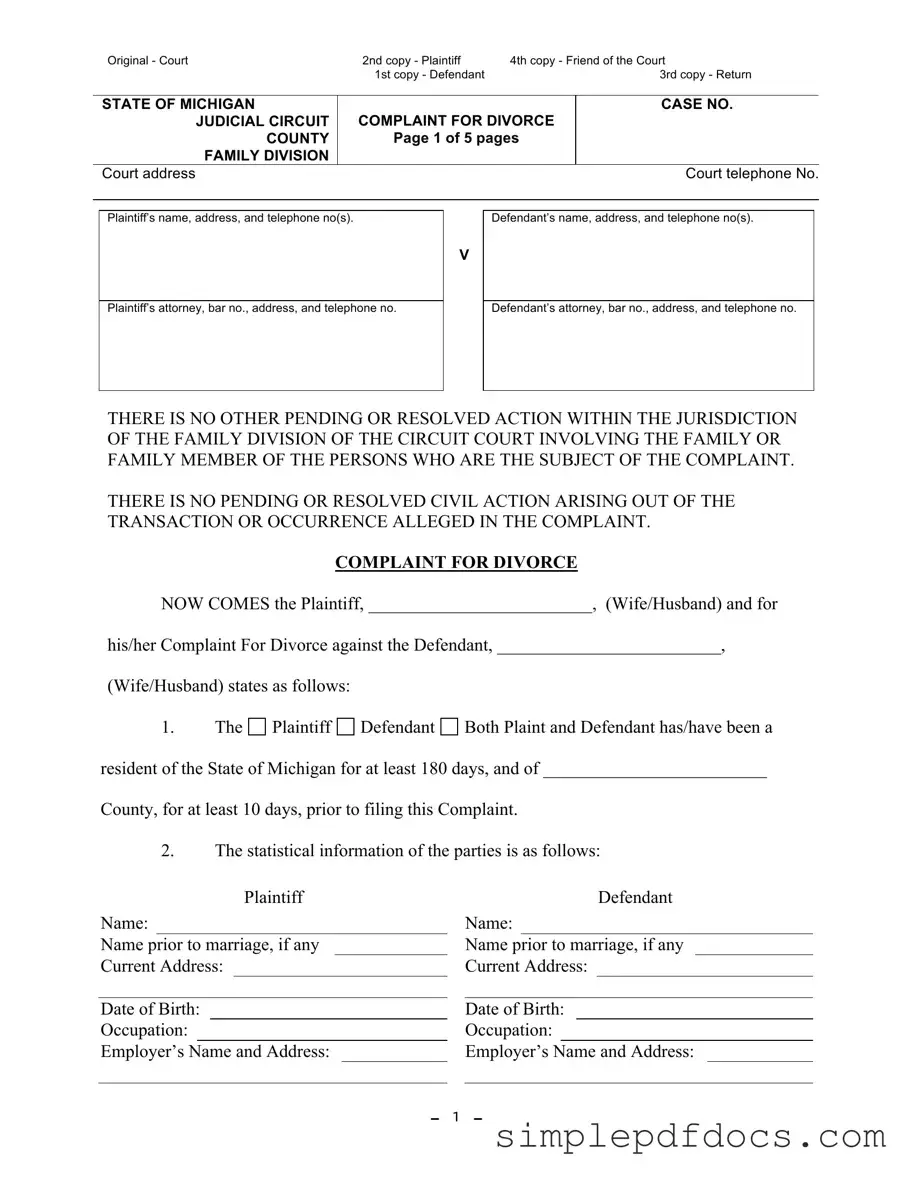The Michigan Complaint Divorce form is a critical document for individuals seeking to initiate a divorce within the state. This form serves as the official request to the court, outlining the essential details of the marriage and the reasons for seeking a divorce. It requires the plaintiff to provide their name, address, and contact information, as well as that of the defendant. Both parties must confirm their residency in Michigan and the specific county for the required duration prior to filing. The form includes sections for statistical information about both individuals, including their names prior to marriage, current addresses, dates of birth, occupations, and employers. Furthermore, it addresses the marriage date and circumstances surrounding the separation, along with any minor children involved in the marriage. The form mandates a declaration of any pending or resolved actions related to child custody or domestic issues, ensuring the court is fully informed of any potential conflicts. Additionally, it outlines the intentions regarding property division and child custody arrangements, emphasizing the need for a Property Settlement Agreement. The ultimate goal of this form is to formally request the dissolution of the marriage while providing the court with all necessary information to make informed decisions regarding custody, support, and asset distribution.
